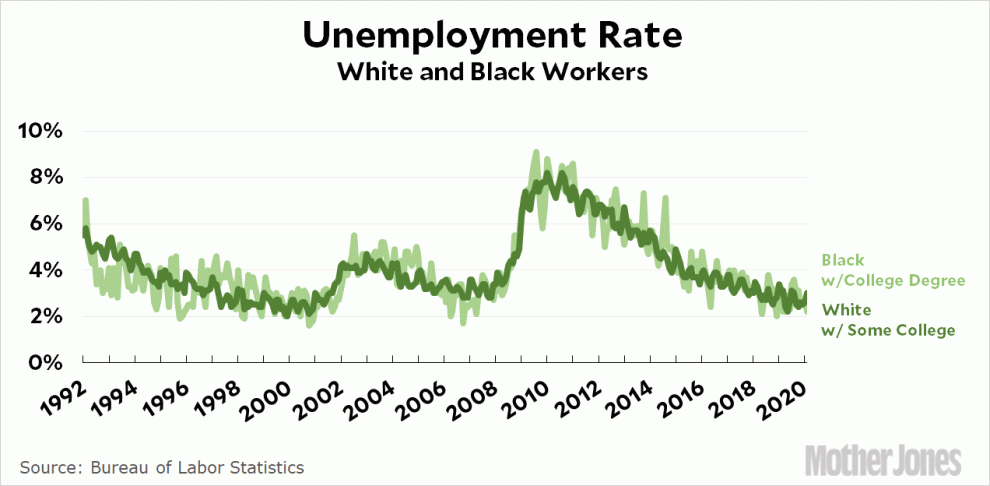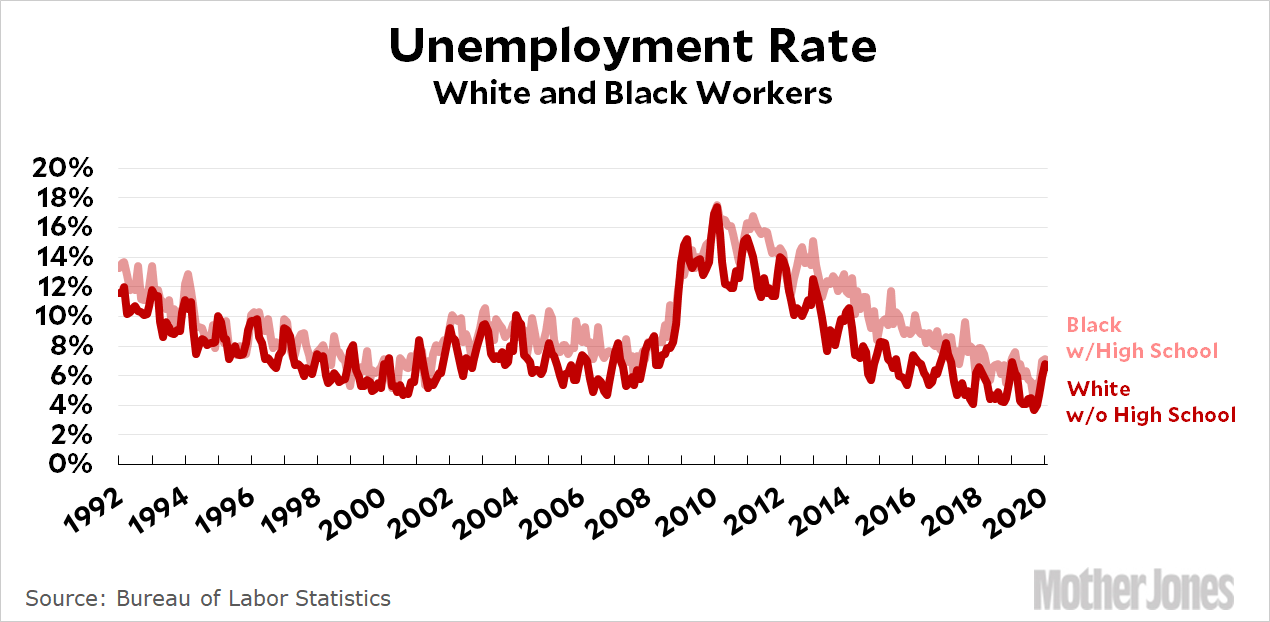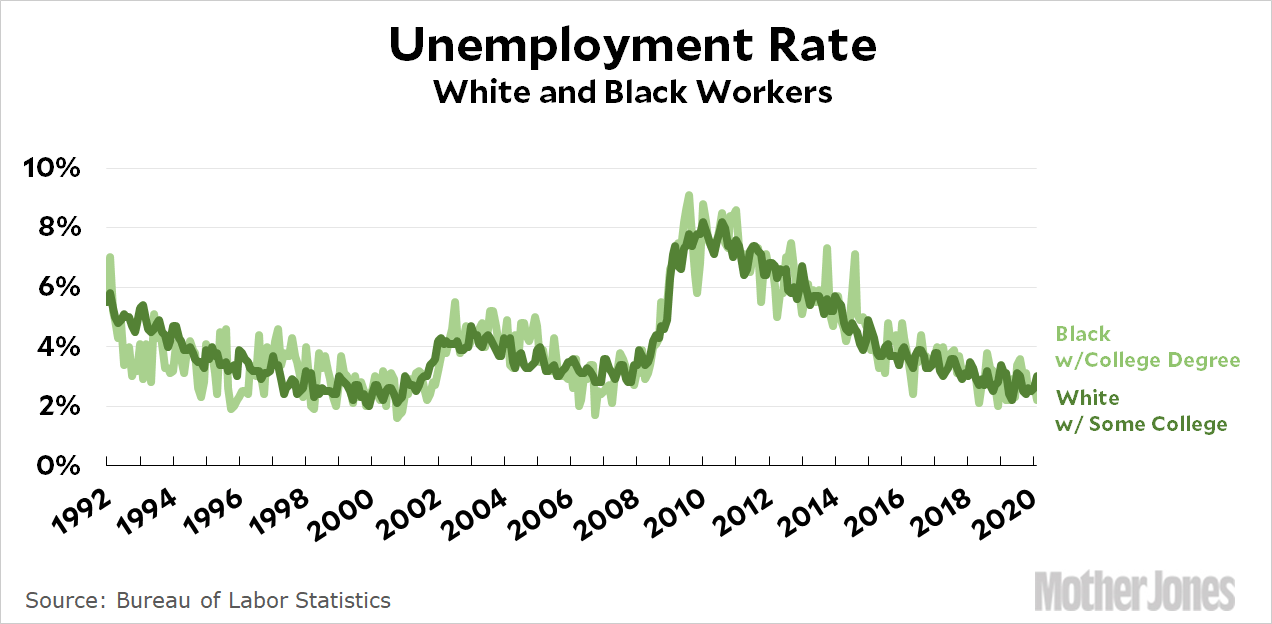
The unemployment rate among Black workers is consistently about twice the unemployment rate among white workers. This disparity has long been known, but what accounts for it? Can we say anything more specific than “systemic racism”? Indeed we can, with the help of a couple of additional charts.
The first one shows that, in terms of employment opportunity, Black workers with a high school diploma are treated about the same as white workers who are high school dropouts. Maybe even a little worse:

And this one shows that Black workers with a college degree are treated about the same as white workers with only a couple of years of college and no degree:

There are other ways you can slice and dice the unemployment data, but it consistently shows that employers don’t take Black workers with diplomas and degrees seriously. They assume—correctly—that Black high school graduates test at about a tenth-grade level regardless of whether they graduated, and the same employer attitude is likely true about Black college graduates. What’s more, this explains much of the earnings gap too: employers typically pay Black workers about the same on average as white workers with two or three fewer years of schooling.
This is what makes the black-white educational gap such a disgrace. It’s not fashionable these days to obsess over education as the core driver of systemic racism, but I continue to think it’s just about the most important thing out there. The real-world impact is huge, and until it’s addressed I think it’s unlikely we’ll ever truly make significant progress against systemic racism.















